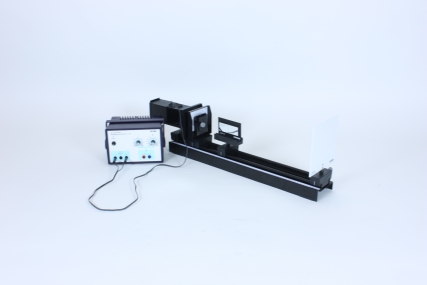Principle
This double mirror experiment devised by Fresnel in 1816 is one of a number of experiments of historical significance which were performed in the 18th and 19th century to demonstrate the wave theory of light. Using two plane mirrors set at an angle to each other of almost 1800 ,two virtual light sources are created by reflection of a diverging beam of light from which two divergent light beams appear to emerge. These are coherent and can thus interfere.
The students should first familiarize themselves with the general set-up of the Fresnel experiment and describe the interference patterns. The angle of the two mirrors remains constant which simplifies the set-up.
In the second experiment, the wavelength of red light is to be determined. You have the Option of using the other colour filters to ascertain the wavelengths of further colours.
Benefits
- Multifunctional light box - All-in-one: Can be used for geometric optics on the table, colour mixing and on an optical bench
- Extension with others sets at anytime, no additional light sources needed, recognition value for students
Tasks
- Let a narrow beam of light shine onto a Fresnel double mirror and observe what happens.
- Determine the distance from the virtual Iight source and, using this and the interference pattern, find out the wavelength of red light.


